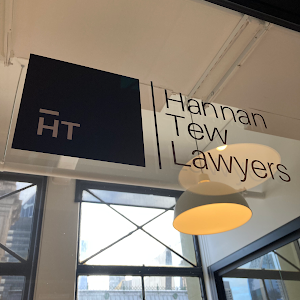The Skills in Demand (SID) and Employer Nomination Scheme (ENS) visa are both employer sponsored visa programs which allow employers to bring skilled workers into Australia for selected occupations. Both visas are very similar in the sense that they allow the visa holder to reside in Australia, work full-time and have their family accompany them.
However, there are some clear distinctions between the two, with the main one being that the ENS grants permanent residency whilst the SID visa is temporary. Further points to consider are below:
Skills in Demand (SID) visa (subclass 482)
The SID visa is an employer-sponsored visa valid for up to 4 years, permitting the holder to live and work in Australia for a sponsoring employer. It has pathways to employer-sponsored permanent residency.
Disadvantages of a SID visa compared to an ENS visa
Restricted to working for sponsor in the nominated occupation
Primary SID visa holders have restricted work rights. In most cases, the primary visa holder can only work for their nominated sponsor and in the occupation code they were nominated in. If a SID visa holder wants to change employers, their new employer will need to lodge a new nomination application (and a visa – if a different occupation code) to take over the sponsorship. This means that in practice moving from one employer to another (or even changing positions) can be challenging. It is certainly less attractive for potential employers, particularly those who do not have a sponsorship in place.
Dependent SID visa holders have unlimited work rights in Australia and are not restricted to who they can work for.
Must maintain health insurance whilst in Australia
Unless the visa holder is a citizen of a country that has a reciprocal health care agreement (RHCA) with Australia, most temporary visa holders (including SID visa holders) will not have access to Medicare.
SID visa holders and their family members must maintain an adequate level of health cover which can become quite costly in the long-run.
For further information on what constitutes adequate health insurance, please refer to our blog here.
Length of stay
School fees may apply (varies across States and territories)
SID visa holders who would like to enrol their children for public schooling may need to pay school fees depending on the State/Territory they enrol with. For example, SID visa holders in NSW needs to pay School fees (2021&2022) between $5,600 to $6,400 depending on the school year for each child.
Children of permanent residents are exempt from school fees.
Advantages of a SID visa compared to an ENS visa
Accessing superannuation
One clear advantage of the TSS visa is the ease of accessing superannuation funds when a visa applicant decides to leave Australia. As a temporary visa holder, they can apply for a superannuation payment when their visa expires (or when they have requested for the cancellation of the temporary visa).
This process can be completed simply through the ATO website once certain requirements have been met.
No age limitation
Unlike the ENS, there is no age limitation on this visa. SID visas might therefore be suitable for people who are over the age of 45 and would like to work in Australia. Certain SID visa holders ove the age 45 may still bea ble to apply for permanent residency through the ENS visa (see here).
Employer Nomination Scheme (ENS) (Subclass 186) visa
The ENS visa is a permanent residency visa. Like the SID visa, it allows the holder to live and work in Australia, but with less restrictions.
There are two main streams for the ENS visa, the:
- Temporary Resident Transitional (TRT) stream and
- Direct Entry (DE) stream.
The TRT stream is for SID visa holders who have worked in their sponsored occuation for 2 years. The DE stream is for someone who has a positive skills assessment and 3 years of overall experience related to the position. The position must also be on the relevant occupation list.
Disadvantages of an ENS visa compared to SID visa
Age limitation
Higher English requirements
Taxation
Advantages of an ENS visa compared to a SID visa
Not restricted to an occupation or an employer
An ENS visa is a permanent residency visa and the holder will enjoy the benefits of a permanent residency in Australia.
Apply for Australian Citizenship after 12 months (if eligible)
Enrol with Medicare
In most cases, an individual will be eligible for Medicare if they live in Australia and have applied for a ENS visa.
For further information, please refer to Services Australia.
Other benefits of being a permanent resident
In addition to benefits above, there are many benefits to being a permanent resident of Australia. This includes being able to remain in Australia indefinitely, work and study. Permanent residents are also able to apply for bank loans to buy property in Australia without needing approval from the Foreign Investment Review Board (FIRB).
Certain job opportunities, or permanent government roles also require applicants to hold permanent residency to apply.
Do you require further information?
We’ve worked closely with businesses to manage foreign workforces and with employees to maintain residence (permanent or temporary) in Australia. If you require any further information, feel free to contact our experienced team by email at [email protected] or by phone at +61 3 9016 0484.


